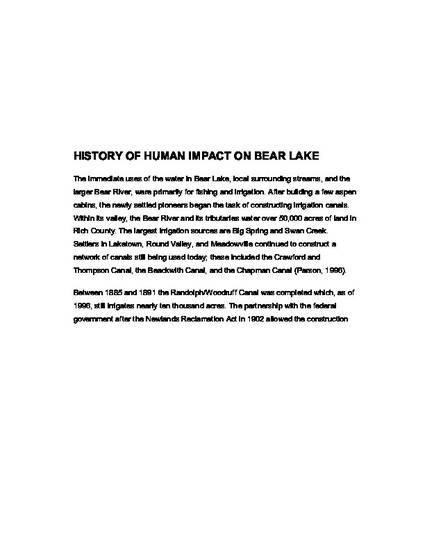
Article
History of human impact on Bear Lake
Natural Resources and Environmental Issues
Publication Date
1-1-2007
Abstract
The immediate uses of the water in Bear Lake, local surrounding streams, and the larger Bear River, were primarily for fishing and irrigation. After building a few aspen cabins, the newly settled pioneers began the task of constructing irrigation canals. Within its valley, the Bear River and its tributaries water over 50,000 acres of land in Rich County. The largest irrigation sources are Big Spring and Swan Creek. Settlers in Laketown, Round Valley, and Meadowville continued to construct a network of canals still being used today; these included the Crawford and Thompson Canal, the Beackwith Canal, and the Chapman Canal (Parson, 1996)....
Citation Information
Patsy Palacios, Chris Luecke and Justin Robinson. "History of human impact on Bear Lake" (2007) Available at: http://works.bepress.com/chris_call/2/
